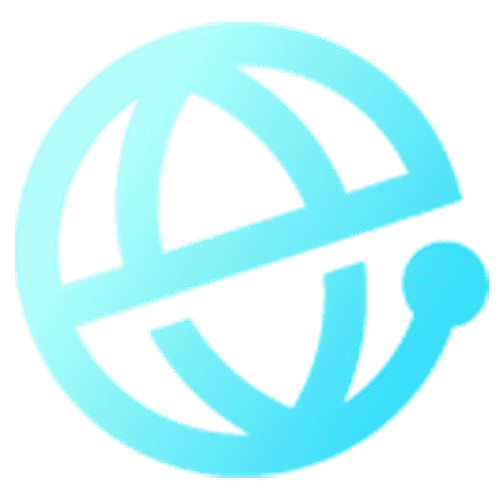- American Sign Language (ASL) is the native language of around 500,000 deaf people in the United States and Canada.
- ASL works through the usage of both hand and face movements.
- Refer to our articles on the top ASL courses if you’d like to learn ASL with the help of expert-led online classes.

American Sign Language (ASL) is a visual language that’s mainly used by the deaf and hard-of-hearing communities.
It is a language that has been around for over 200 years and continues to grow as America diversifies.
According to Modern Language Studies, ASL is also becoming an increasingly popular foreign language ASL is the third most studied language in Institutions of Higher Education in the USA.
The statistics do not lie – people are interested in learning ASL.
But, what if one is not hard-of-hearing or deaf? Is ASL still a language worth picking up? The answer is a resounding yes.
The following are some of the benefits of learning ASL:
- ASL users have better reaction times and peripheral vision compared to non-signers.
- ASL speakers read non-verbal cues better than their non-signer counterparts. Want to become an expert at reading body language? Speaking ASL will make you one.
- ASL speakers are great listeners – another skill that comes as a side-effect of knowing ASL. Reading sign language helps you to fully focus on the person you are communicating with. This, in return, will make you a better, more empathic listener.
- ASL speakers are better at spelling – Research shows that children who learn basic ASL signs show improved spelling skills. There is a proven relationship between our muscles and our memory – add a sign to a word, and you are guaranteed to remember how to spell that word.
- ASL interpreters and translators are in demand – The employment of interpreters/ translators is expected to grow by 20% from 2019 to 2029. Certified ASL interpreters and translators also earn well above the annual median pay in the US.
Contrary to popular opinion, learning ASL is NOT harder than learning any foreign language.
It takes a bit of time to get used to signing, but once you start, it is like learning any other new language – consistency and momentum will eventually get you there!
Here’s how you can learn ASL online in 6 steps.
Learn ASL in 6 Steps
Enroll in an online ASL course
If you are embarking on a route of learning ASL on your own, an online course would be your best bet of succeeding. There are other resources such as ASL websites, ASL apps, and YouTube tutorials as well (we will list some of the best free ASL resources later in this article.), but for someone starting out, a well-structured online course would provide the best foundation possible.
Admittedly, there are a lot of ASL courses out there, both paid and free. And, it can be hard to pick out the ones worth your time and money.
Not all ASL courses are created equal. Some courses say they’re teaching you ASL, but in reality, they are little more than lazy translations with some grammar rules thrown in.
To make choosing the right course easier, allow me to list some criteria you should look out for when choosing your online ASL class:
- The ASL proficiency level taught in the course – ASL has 5 levels of proficiency. A level 1 ASL speaker is capable of communicating in routine scenarios (common courtesy, introductions, etc.), while a level 5 ASL speaker can communicate like a native signer.
A reliable online ASL course will inform you on which proficiency level you can expect to reach after completing the online course. Generally speaking, most online ASL courses will teach you level 1 or 2 ASL skills. These 2 levels of proficiency can be acquired solely by self-learning without the need for excessive one-on-one tutoring.
- A level 1 ASL course will have no prerequisites except an interest in learning ASL. A level 2 ASL course will expect you to know the basics like the alphabet, numbers, common phrases etc.
If you do decide to go further, there are online ASL courses for that as well. But, these courses tend to cost more. Plus, if you are going for a proficiency level of 3 and beyond, you will also need one-on-one tutoring and consistent real-life practice of the language.
- The instructor of the course – Look for courses that are fully transparent about the instructors and their credentials. You do not want to learn from someone with only a passing interest in ASL.
My advice here is to prefer teachers that are certified ASL instructors or at least active and senior members of the ASL community. Luckily, there are several great online ASL classes that are inexpensive and are also led by people who teach ASL professionally in their day-to-day lives.
- Online reviews – A good online ASL class will have tons of reviews. Before investing in a course, take your time and go through some of the reviews. The written testimonials of other students will help you decide whether that specific course runs in parallel with your own learning goals.
If you are not sure where to start, feel free to read our reviews on the 6 best ASL online courses of 2021. Whatever your experience level or budget, rest assured that you will find a fitting course from that list.
Learn the fingerspelling alphabet
A good online ASL course will offer you clear, detailed lessons on the ASL alphabet. Take as much time as you need with learning the ASL alphabet, as it truly is the very foundation of everything else to follow.
Remember that when you first learned how to read and write in your native language, you started with the alphabet. When it comes to learning ASL, things aren’t any different.
For an introduction to how the ASL alphabet looks, have a look at this video from ASLMeredit:
ASLMeredith is a social media personality that has a large amount of content for beginners to ASL.
In one of her free YouTube videos, ASLMeredit slowly spells out the entire ASL alphabet from different angles. If you are planning on only sticking to learning the alphabet of ASL, ASL Meredith’s video or a good ASL app (our favorite ASL apps are listed later in this article) are more than enough to get you there.
Knowing the fingerspelling alphabet is also a sort of cheat code for ASL beginners. When you are communicating in ASL and do not remember a certain word or phrase, you can simply spell the word or the phrase using the fingerspelling alphabet.
Spelling out the words is widely accepted among hobby ASL speakers and the deaf community alike. Do not be worried about getting weird looks or wasting someone’s time.
Probably, the contrary will be true – your conversation partner will probably be very impressed by your efforts. The deaf and hard of hearing community, in general, is very welcoming to everyone learning ASL.
NB: While spelling is acceptable when you are learning ASL, it is not considered a primary means of communication among the deaf community and advanced ASL speakers. Spelling the words by using the ASL alphabet is not a substitute for speaking ASL.
Learn about the deaf culture
There is an entire subculture around ASL. And, it is highly advisable to learn about this culture if you are learning the language. In that aspect, learning ASL is somewhat similar to learning Japanese or Chinese – it is nearly impossible to speak the language correctly unless you learn about some of the culture behind the language.
ASL and deaf culture are not only about gesticulating a set of signs. Far from it.
In fact, for people only experienced with auditory communication, it can be eye-opening to see just how expressive and vibrant this culture is.
As far as immediate practical benefits go, the signs and the formation of sentences will immediately start to make more sense as you experience how native ASL speakers express themselves in art and everyday life.
Watch ASL videos
With the advent of the internet, ASL students have a nearly unlimited pool of free video resources available to them at any time. Make use of this opportunity and put your skills to the test regularly.
The following are some of our favorite YouTube channels for studying ASL online:
- Dr. Bill Vicars – The YouTube channel of the founder of ASL University. Vicars has been putting out ASL content for more than 10 years and his channel is full of material for ASL students, interpreters, and teachers.
- ASLMeredith – One of the most engaging online ASL tutors. Meredith’s channel features beginner-friendly ASL tutorials and a plethora of content on the community as well. This channel is well worth a watch even if you are not planning on pursuing ASL in-depth.
- Signed with Heart – A simple but well-rounded collection of ASL tutorials for complete beginners.
Try watching ASL videos by turning off the closed captions/audio. See how well and how much of the content you understand.
After this, do a little backtracking in the parts you didn’t understand. This time, put on the closed captions or the audio. With this methodology of learning, you are bound to pick up something new after each video you viewed.
That being said, if you use this approach immediately after learning the very basics (alphabet, common phrases, etc.), you are throwing yourself in at the deep end.
Get an ASL app
Consistency is one of the keys to succeeding in learning a new language. Thus, my suggestion is to get an ASL app for some on-the-go learning when you are on your commute and have some free time to kill.
There are many ASL apps out there, but these two free apps stand out from the pack as of 2021:
- The ASL app (available for iOS and Android) – An intuitive app with 2500+ signs and phrases that is suitable for beginners and intermediate signers alike. The app also has tons of useful features such as the slow mode and the ability to save signs you want to practice more.
Hands On ASL (available for iOS and Android) – An ASL app that uses 3D models of signs instead of videos or stills. It is an app that uses gamified learning via various quizzes, exercises, and a fun reward system.
Practice in real life
So you know the ASL alphabet, numbers, some key phrases, and the common courtesy of deaf culture. Now is the time to get some real-life practice under your belt!
If you live in a major American city or town, you are likely to find ASL practicing opportunities in the following places:
- Universities
- Libraries
- Churches
- Organizations for deaf/hard of hearing people
In a nutshell, major cities will offer you plenty of practicing opportunities at any time.
If you do live in a smaller municipality, my suggestion would be to use the internet and try to practice speaking ASL online. Looking for a practice partner is not always the easiest of tasks, but with some diligence, you will eventually find a partner or a study group.
Become active on ASL Facebook groups and the ASL subreddit on Reddit. If you are serious about trying to practice with a partner, feel free to take the reins and start a new thread yourself. Sooner or later, you will find people to practice ASL with.
All things considered, legitimate real-life practice will be the single best thing you can do for advancing your ASL skills quickly and efficiently.



